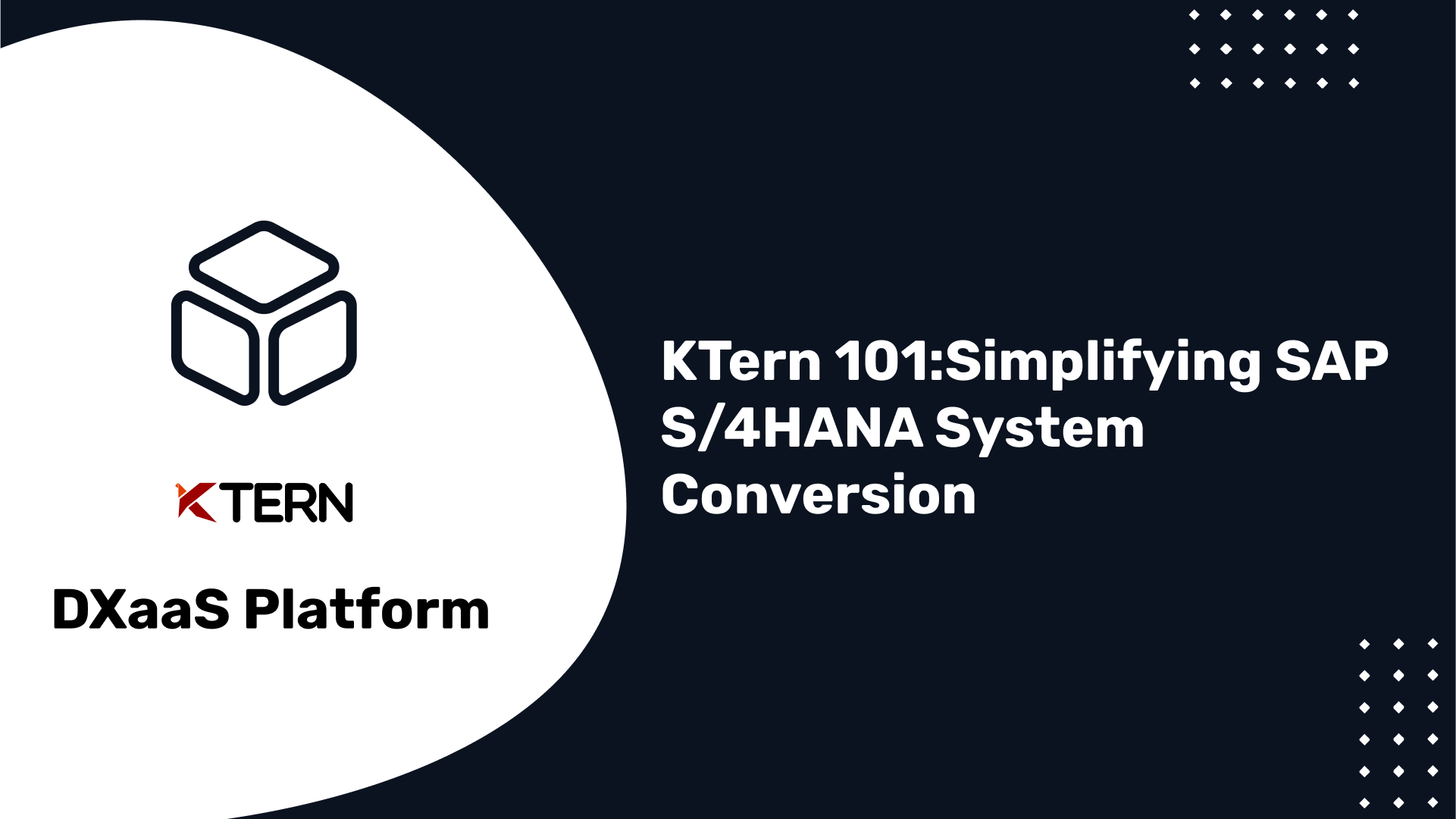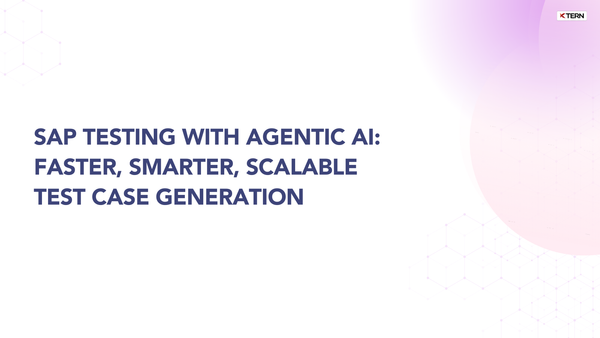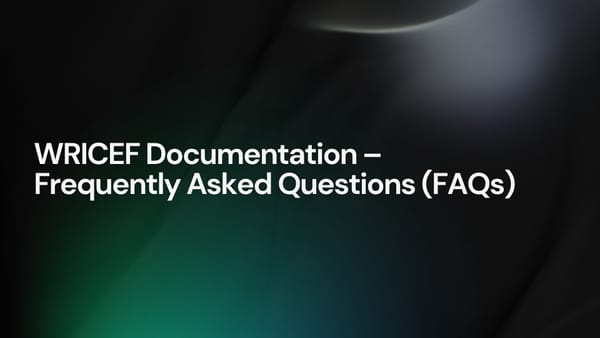Steps to Simplify SAP S/4HANA System Conversion
With SAP about to end mainstream maintenance for ECC in 2025, ECC customers are steadily moving to SAP S/4HANA. If you haven’t started your journey to SAP S/4HANA, I would recommend you stay ahead of the race and begin your digital transformation before it is too late. Since the move to SAP S/4HANA is more than just a technical upgrade, an accelerator will help address the complexities involved in the transition. Enter - KTern, the all-in-one product to accelerate, simplify, and take control of the complete ECC to S/4HANA System Conversion.
Table of contents
- Paths from ECC to SAP S/4HANA
- Assessment of Existing SAP ECC Landscape
- SBX, DEV & QAS Conversions
- Custom Code Remediation
- End User Testing
- Data Assessment
- PRD Conversion
Paths from ECC to SAP S/4HANA
There are 3 possible approaches to migrate from ECC to S/4HANA
1. System Conversion (BROWNFIELD)
In this approach, the existing SAP ERP system is converted to S/4HANA using Software Update Manager (SUM). The System Conversion approach is relatively faster and a less disruptive way to move to SAP S/4HANA.
2. New Implementation (GREENFIELD)
In this approach, a new SAP S/4HANA system is created, configured from scratch and data from the existing ERP system is imported using SAP S/4HANA Migration Cockpit.
3. Landscape Transformation
This approach involves consolidating various regional business landscapes to a single global S/4HANA landscape. The most suitable approach can be decided based on the analysis of various factors in the current ECC Landscape. In this article, we shall look at the various processes involved in the System Conversion approach and how each process can be made simpler with KTern.
1. Assessment of Existing SAP ECC Landscape:
When we talk about the conversion project, it is obvious that most ECC customers have questions such as:
- What are the benefits that I am going to get, by moving to S/4HANA?
- What will be the duration of the conversion project?
- How much business and IT resources do we need to deploy for the Conversion project?
- How much will it cost the business to move to SAP S/4HANA?
An assessment of the existing ECC landscape is performed to answer the above-listed questions. Also, this assessment allows us to understand the risks and challenges that may be faced during the conversion project itself. It is often misunderstood that executing the SAP S/4HANA Readiness Check will conclude this phase. More than the technical analysis of the ERP system, some of which can be accessed using the S/4HANA Readiness Check report, it also becomes important to perform Fit Gap Analysis in order to map the functional changes in S/4HANA to that of the existing ERP system. This involves a considerable amount of manual effort, and the recommended practice is to take a copy of the Production (PROD) system before performing this phase since N number of OSS notes and pre-configurations must be applied in the system.
How does KTern Simplify Assessment?
Imagine if all the above tasks listed in this phase are automated and need only one week to be performed without installing any OSS Notes (or) any pre-configurations to be made in the system. That would be awesome, right? KTern is designed and developed to do this. It automates the entire assessment phase, gives you a detailed S/4HANA Assessment report, estimates the duration of your Conversion project, and identifies the business & IT resources to be involved in the Conversion project. Check out the KTern Assessment offerings , to get started with your S/4HANA Assessment.
2. SBX, DEV & QAS Conversions:
Once the assessment for SAP S/4HANA has been completed, we can start the conversion project with a Sandbox (SBX) system. The duration of this SBX conversion may be relatively elongated based on the number of fixes that have to be made while running the SAP Software Update Manager (SUM) tool. The SUM tool provided by SAP helps with updating the existing software components, migrating the data, and with data conversion. There is no need for us to panic if we are thrown with a lot of fixes to be made in SBX. Since it is a mock conversion, we can use this as a learning platform where we prepare ourselves for our DEV, QAS & PROD Conversions. All the fixes made in the SBX conversion can be captured in a TR (Transport Request) and moved to DEV, QAS & PROD systems, thereby reducing our timeline for further conversions.
How does KTern simplify SBX, DEV, & QAS Conversion?
KTern offers a Project Management Suite by the use of which we can get the entire list of activities to be performed in each Conversion Run. The built-in workflow and collaboration engine in KTern eases communication among the project team members and maintains the entire history of our conversion project. The TRs (Transport Request) captured in each conversion run can be recorded against each task and the TR repository allows us to monitor the movement of TRs across multiple conversion runs. The Issue Tracking & Management Suite of KTern built with our S/4HANAPEDIA engine, is known for its proactive handling of issues and also provides insightful propositions to all the issues/defects during the course of the project.
3. Custom Code Remediation
Customization is a part of any SAP ERP system. It is obvious that we need the custom objects present in our existing landscape to work well in SAP S/4HANA. Not all custom objects get impacted when migrated to SAP S/4HANA. Hence, it becomes necessary to identify the custom objects that are going to be impacted so that the remediation is performed only on the relevant set of custom objects which are impacted. Once the impacted objects are identified, it is assigned to the technical ABAPERS who remediate and make them compatible with SAP S/4HANA.
How does KTern simplify custom code remediation?
With KTern, we can identify the impacted custom objects quickly with KTern Custom Code Adaptation. KTern has a built-in feature, “Auto Custom Code Remediation” where it automatically remediates the impacted custom programs and makes them compatible with S/4HANA. This reduces a huge amount of manual effort, and reduces the project timeline by a considerable amount, thereby reducing the total cost of conversion of the customer. KTern also advises on the custom code archival, where it identifies your old unused custom code so that those can be archived and neglected for the remediation process.
4. End User Testing
When we think about updating/changing any software, the process of testing becomes inevitable. The testing process can be carried out across multiple phases of the conversion project. Test scripts can be generated during system conversion either manually or using tools available in the market. Appropriate business end users can be selected to test the critical business scenarios.
How does KTern simplify testing?
KTern offers a comprehensive test suite that automatically performs an in-depth analysis of the existing business processes and generates the test scripts. Automatic testing performed by KTern saves a lot of manual effort in the project, thereby reducing the project timeline. KTern also enables us to manage the test scripts execution which becomes a crucial aspect if the testing process is carried out across multiple phases.
5. Data Assessment:
Validation of enterprise data after data migration is a critical process to ensure that all the data has been carried from the existing ECC system to the newly converted S/4HANA system.
How does KTern simplify data validation?
With the amount of data present in any SAP system, manual validation of data is a tedious task that could months. KTern helps to automatically validate Master & Transaction data in the ECC & S/4HANA system and indicates if there are any data discrepancies. This process is completed within a few days or weeks and thus saves a lot of time & effort, which in turn reduces the project timeline and cost. Check out how KTern can help with Data Assessment.
6.PRD Conversion:
By performing multiple mock conversions (SBX, DEV, QAS), the cut-over plan and the downtime window for the PROD conversion run can be finalized. The fixes made in the rehearsal runs can be carried to the PROD system during PROD conversion. Once the PROD system has been successfully converted, data validation is performed again to prevent data indifference.
How does KTern simplify PROD conversion?
The cut-over orchestrator in KTern helps finalize the cut-over plan for PROD conversion. The tasks performed in the conversion runs leading up to the PROD run are clearly captured. These are used by KTern to automatically suggest the cut-over plan. In addition, the TR Repository in KTern helps suggest the TRs (Transport Requests) that have to be moved to the PROD system during the conversion process.
With the kind of automation that KTern offers for system conversion, it’s time for you to get started with SAP S/4HANA Conversion rather than worrying about the complexity of the migration. Want to learn more about KTern? Look at our demo system or schedule a guided demo according to your available timeslots.




